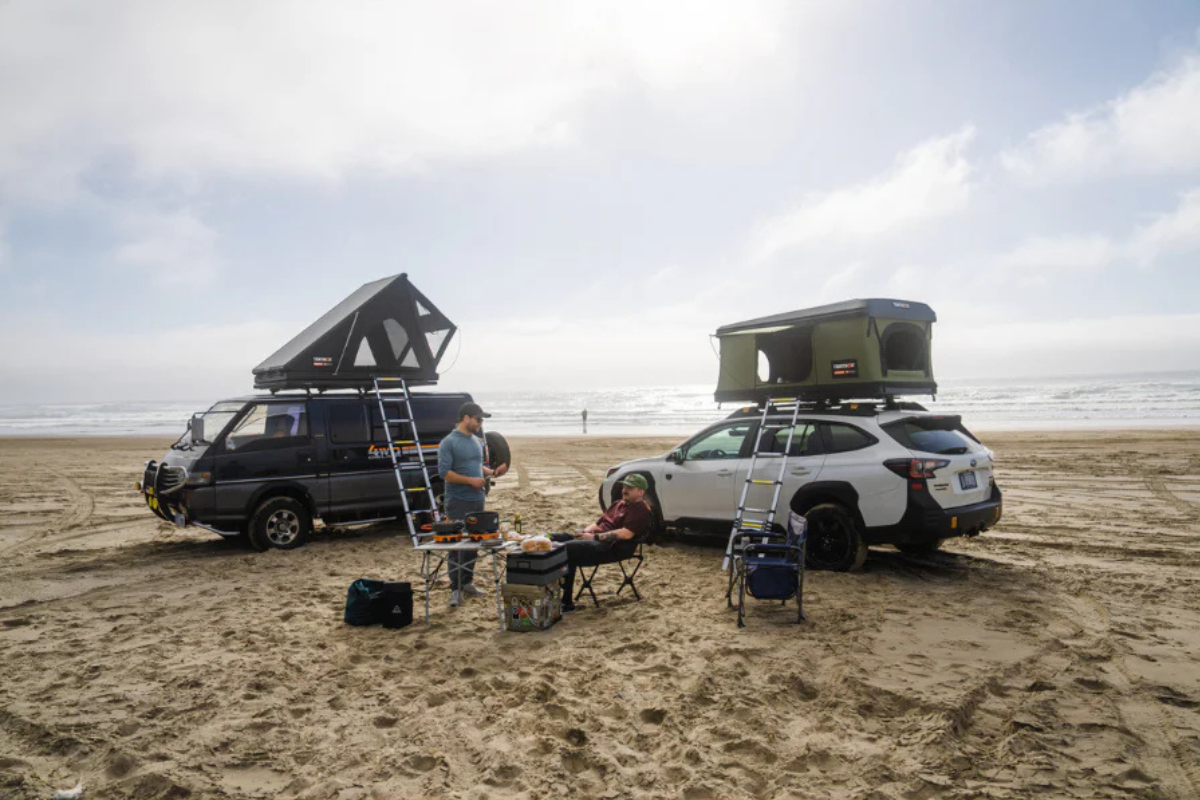
How to Choose the Perfect Rooftop Tent for Your Adventures
Rooftop tents (RTTs) have transformed camping, offering an elevated sleeping experience that’s comfortable, convenient, and adventure-ready. Whether you’re new to RTTs or looking to upgrade, this guide covers everything from benefits and setup to choosing the right one for your vehicle.
Why Choose a Rooftop Tent?

Rooftop tents are more than just a camping trend; they offer serious advantages over traditional ground tents. Here’s why they’re gaining popularity:
-
Quick & Easy Setup: Unlike ground tents, RTTs unfold in minutes, getting you from arrival to relaxation in no time.
-
Off-the-Ground Comfort: Elevated sleeping keeps you away from rocks, uneven ground, and critters.
-
Built to Last: With durable fabrics, strong aluminum frames, and sturdy bases, RTTs withstand rough weather better than most ground tents.
-
Adventure Versatility: Mount your tent on almost any vehicle, from SUVs to trucks, and set up camp anywhere your vehicle takes you.
-
Comfort Features: Built-in mattresses, ventilated windows, and spacious designs make for a cozy camping experience.
Hard-Shell vs. Soft-Shell: Which One is Right for You?

Rooftop tents come in two main styles—hard-shell and soft-shell. Here’s how they compare:
Hard-Shell RTTs
-
Pros: Faster setup, aerodynamic design, increased durability, better weather resistance.
-
Cons: Higher price point, heavier weight, limited size options.
Soft-Shell RTTs
-
Pros: More affordable, larger sleeping capacity, lightweight.
-
Cons: Longer setup time, less aerodynamic, fabric can wear faster over time.
What to Consider When Choosing a Rooftop Tent

1. Compatibility With Your Vehicle
Before purchasing, ensure your vehicle and roof rack can support the tent’s weight.
-
Dynamic weight capacity (while driving) must handle the tent’s weight.
-
Static weight capacity (while parked) should support the tent, occupants, and gear.
-
Check manufacturer specs for both your vehicle and rack to avoid overloading.
2. Sleeping Capacity & Comfort
-
Solo travelers may prefer a compact 2-person tent.
-
Families or groups should opt for larger 3- or 4-person models.
-
Built-in mattresses vary in thickness, so choose one with adequate comfort.
3. Weather Resistance & Durability
-
Look for weatherproof fabrics, sturdy poles, and reinforced seams.
-
Hard-shell tents offer superior protection from wind, rain, and snow.
-
Soft-shell tents provide ample ventilation and mesh windows for warm climates.
4. Setup & Convenience
-
Hard-shell tents often feature gas struts for an effortless pop-up setup.
-
Soft-shell tents require unfolding and additional ladder adjustments.
-
Annexes and awnings add extra living space but increase setup time.
5. Budget & Value
-
RTTs range from budget-friendly soft-shell options to premium hard-shell designs.
-
Consider long-term durability—investing in a quality tent can save money over time.
-
Factor in additional costs like roof racks, annexes, and accessories.
Installation & First-Time Setup Tips
Mounting your rooftop tent is a one-time task, but it requires careful planning:
-
Install a Strong Roof Rack: Ensure it’s rated for your tent’s weight.
-
Get a Helping Hand: RTTs are heavy—enlist a friend for lifting and securing it.
-
Double-Check Fitment: Align the mounting brackets properly and tighten all bolts.
-
Test Before Your Trip: Set it up in your driveway to get familiar with deployment.
Final Thoughts: Is a Rooftop Tent Right for You?

Rooftop tents offer the perfect blend of comfort, convenience, and adventure. They’re ideal for campers who value quick setup, elevated sleeping, and durable construction. If you’re ready to take your outdoor experiences to new heights, investing in an RTT might be your best camping decision yet.
Ready to find the perfect rooftop tent? Browse our selection and start planning your next adventure!

